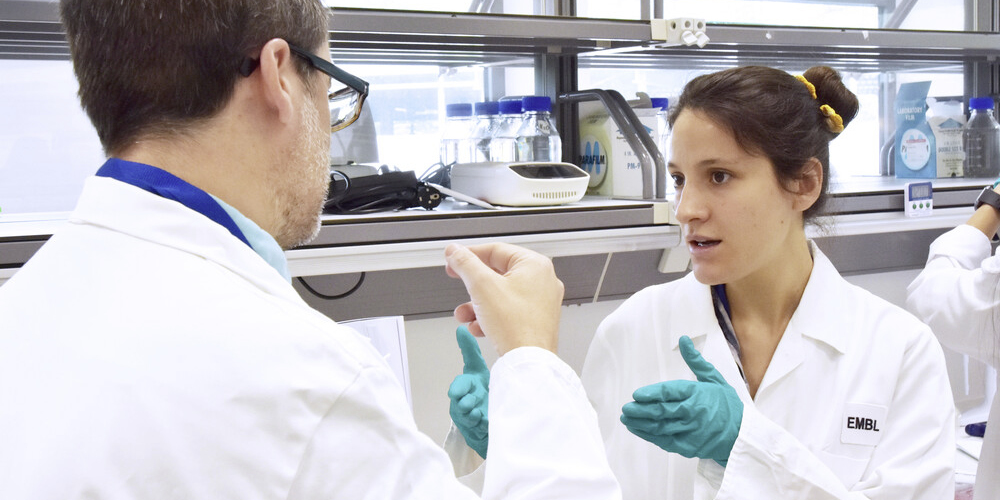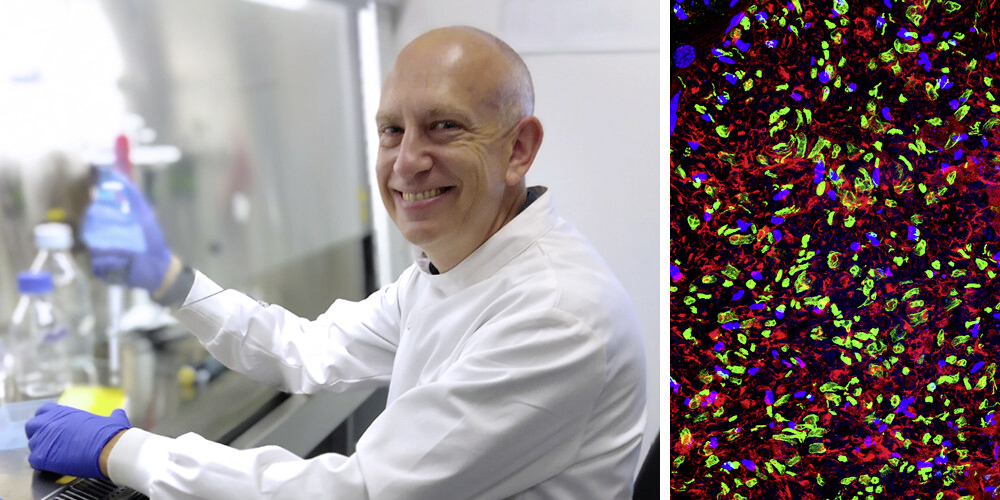EMBL’s many components are much like the many parts of a living, breathing organism, each contributing to the whole in its own unique way. Each component also has its own history. Here are just a few of these stories.
hd
EMBL Sites
EMBL Heidelberg
EMBL’s main laboratory was inaugurated in 1978 as the first EMBL facility dedicated to basic molecular biology research, technology development, service provision and advanced training, making it the headquarters site. Today, this campus provides a nexus for its missions with facilities like its state-of-the-art EMBL Imaging Centre, an Advanced Training Centre that draws experts from around the world for its conferences and courses, and collaborative workspaces with industry, such as the Cellzome biotech company co-located here.

hamburg
EMBL Hamburg
In 1969, Ken Holmes was developing new methods using synchrotron radiation beams as a source for X-ray diffraction from muscle fibres. He presented his work, which depended on the Deutsches Elektronen-Synchrotron (DESY) – the first of its kind in the world. Hamburg, DESY’s location, was immediately added to the planned programme for EMBL outstations. The agreement to set up the Hamburg outstation – the first EMBL outstation – was signed in 1975. Today, scientists at EMBL Hamburg use the state-of-the-art infrastructure for integrative structural biology available on the DESY campus to unveil the structure of proteins that impact human health.

gr
EMBL Grenoble
Also in 1975, EMBL and Institut Laue-Langevin (ILL) forged an agreement to use neutron beams to investigate biological structures, establishing EMBL’s second outstation site at Grenoble, France. ILL’s nuclear reactor continues to provide high flux neutron beams, and the European Synchrotron Radiation Facility (ESRF), which produces amongst the world’s most intense X-ray beams, has been part of the research triad since 1994 when it went online, expanding the use of X-ray crystallography and broadening the scope of structural biology. In 2020, the structural biology beamlines at ESRF were updated, following the ESRF upgrade, to become the world’s first fourth-generation synchrotron (ESRF-EBS).

ebi
EMBL’s European Bioinformatics Institute
Founded in 1994, the roots of EMBL-EBI actually lie in the world’s first nucleotide sequence database, the EMBL Nucleotide Sequence Data Library (now known as the European Nucleotide Archive), which was established in 1980 at EMBL Heidelberg. The original goal was to establish a central database of DNA sequences, rather than have scientists submit sequences to journals. The European Nucleotide Archive and the protein sequence resource UniProt (then known as Swiss-Prot–TrEMBL) were the original EMBL-EBI databases. Since then, EMBL-EBI has played a major part in the bioinformatics revolution, currently providing the world’s most comprehensive range of molecular databases and offering an extensive training programme, in addition to a core fundamental research programme.

ro
EMBL Rome
In 1994, the EMBL Council and then Director General Fotis Kafatos committed to establishing a Mouse Biology Programme in Monterotondo, Italy with four research groups, but it was only in 1999 that EMBL formally signed an agreement with the Italian Republic for its Italian research site. Initially EMBL Monterotondo, the site was EMBL’s ‘Mouse Biology Unit’, then in 2017 it was renamed as EMBL Rome and the research focus became epigenetics and neurobiology. Today, EMBL Rome connects under one roof experts studying the control of gene expression with those examining sensory processing and behavioural control.

barce
EMBL Barcelona
In 2017, Barcelona became host to EMBL’s newest site, so scientists could take advantage of state-of-the-art imaging facilities that allow them to study how tissues and organs function and develop, in health and disease. Today, scientists worldwide have access to microscopy and modelling technologies specifically designed for studying tissues. In 2022, the site completed its fifth year of operations, a period which saw many stories of scientific triumph, innovation, and growth.

EMBL Missions
researc
Research
Among EMBL’s many accomplishments in its first 20 years were key insights and advances in cell biology. This was a critical time with many discoveries and technical approaches being driven by very young scientists, such as Kai Simons, who brought the Semliki virus to EMBL with him from Finland in 1975. From exploring the molecular components inside a cell to studying whole populations and ecosystems, EMBL scientists today are exploring life across scales through eight transversal research themes that foster collaborative, multidisciplinary research: Molecular Building Blocks, Cellular and Multicellular Dynamics, Microbial Ecosystems, Infection Biology, Human Ecosystems, Planetary Biology, Data Sciences, and Theory@EMBL.

serv
Scientific Services
Already during EMBL’s conception, its Council agreed that the laboratory should support critical instrumentation that would otherwise be difficult for individual national labs to support. This included, for example, managing and facilitating the use of energy sources by structural biologists at large radiation facilities like those at DESY and ILL in Hamburg and Grenoble, respectively. Through its many core facilities and service offerings, EMBL continues to provide life science researchers in Europe and beyond with access to the very latest in scientific technologies, infrastructure, and data resources, including open access to myriad databases and tools via EMBL-EBI.

tra
Training
Right from the start, EMBL recognised the important role it had to play in training scientists from member states and beyond. It has always played a key role in disseminating information about the latest research advances and techniques developed both at EMBL and elsewhere through courses, workshops, and conferences. In 1983, it established a predoctoral programme to provide world-class training for scientists at early career stages. Today, this EMBL mission extends across multiple internal and external training avenues – further evidence of EMBL’s belief that every single role contributes to the betterment of the organisation and scientific progress.

inn
Innovation & Translation
One of EMBL’s core missions is to actively engage in technology transfer and industry relations as one more way to target societal impact. Founded in 1999, EMBLEM is the wholly owned commercial subsidiary and exclusive technology and knowledge transfer partner of EMBL. Additionally, EMBL has historically engaged in private and public partnerships that allow for networking and shared scientific information that empowers future collaborative ventures.

eur
European life science leadership and integration
The concept behind EMBL is to offer Europe a centralised research hub that elevates every country’s science without taking valuable researchers away. From the first 10 member nations that ratified the EMBL proposal in 1974, the European life sciences laboratory has grown to draw the support of 29 full member states, one prospective member state, one associate member state, and counting. EMBL has continued to attract more partners and collaborators through the years.
